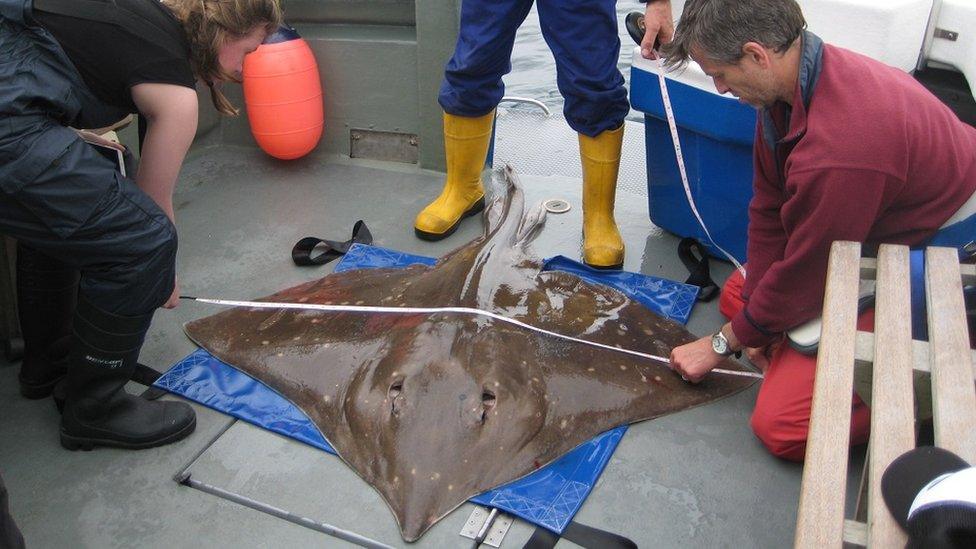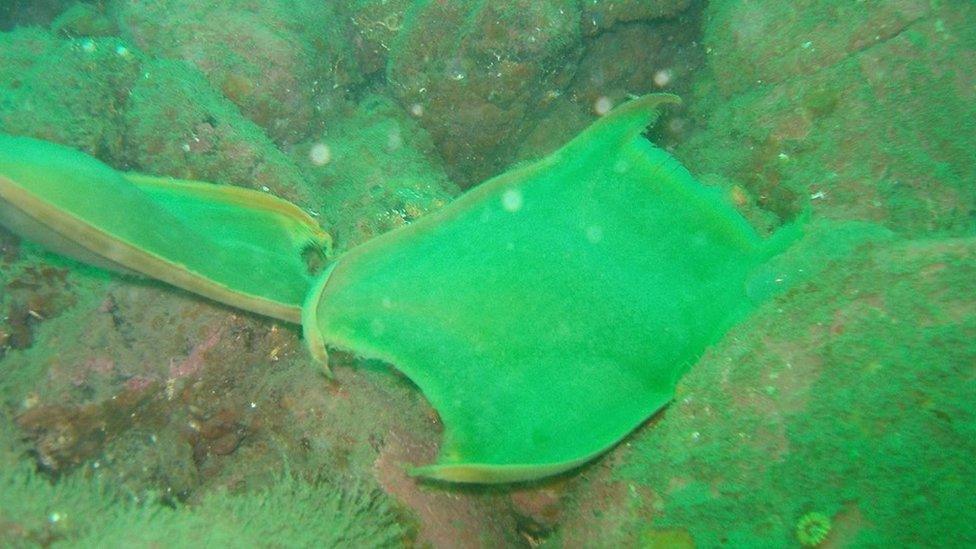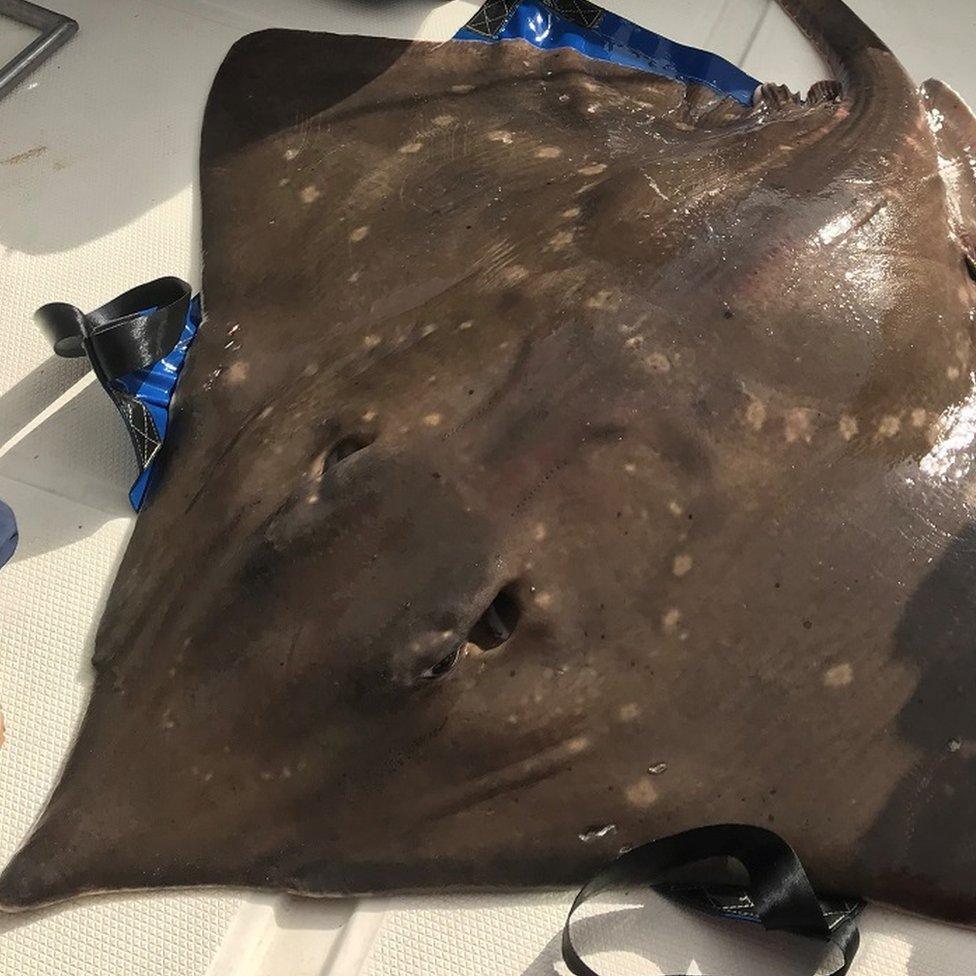Bid to extend protection for rare fish 'nurseries'
- Published
Flapper skate are members of the shark family
Steps to protect one of Scotland's rarest fish could become permanent under Scottish government plans.
Flapper skate, which belong to the shark family, can weigh as much as a baby elephant and live for more than 40 years.
Scientists have discovered flapper skate "nurseries" in the Red Rocks and Longay area of Skye's Inner Sound.
The Scottish government has proposed designating the area as a permanent Marine Protection Area (MPA).
A temporary MPA was put in place in March last year, and then extended in December, after hundreds of flapper skate eggs were found.
The designation prohibits some activities such as fishing, diving and construction.
A consultation, external has started on the plan to make the nature conservation measure permanent. It also includes a proposal to lift a restriction on scallop diving and some recreational diving.
Permits would be required for scientific diving or surveys which would involve taking or touching flapper skate eggs.

Flapper skate are members of the shark family

The new permanent MPA aims to protect an area where flapper skate lay their eggs
In Scotland, flapper skate are found on the west coast and around Orkney and Shetland.
Their eggs take about 18 months to hatch and the fish then take more than 10 years to reach sexual maturity.
They produce low numbers of offspring, meaning populations recover slowly from any negative impact such as habitat loss.
The adult fish hunt for prawns, other skate and small sharks in deep water.
Historical overfishing and disturbance by trawlers of seabed where skates have laid their eggs has led to a decline in their numbers.

Flapper skate can live for longer than 40 years
It has been illegal to land flapper skate commercially since 2009 but flapper skate are still vulnerable to capture as a bycatch.
Fishing boat crews that accidently catch the fish are required to return them to sea as quickly as possible.
Scientists have been studying Scotland's populations to better understand their behaviour.
Experts at public body NatureScot, the Scottish Association for Marine Science in Oban and University of St Andrews have created an online photo database of flapper skate called SkateSpotter, external.
They have found that individual skate can be identified from the spot patterns on their backs.
The photographs for the database are provided by anglers who catch the skate before releasing them back into the water.
The anglers also post information on the size of the fish and the locations of where the same skate are being caught.
Volunteers also help to match up images of the same skates in the database.
Related topics
- Published11 March 2021
